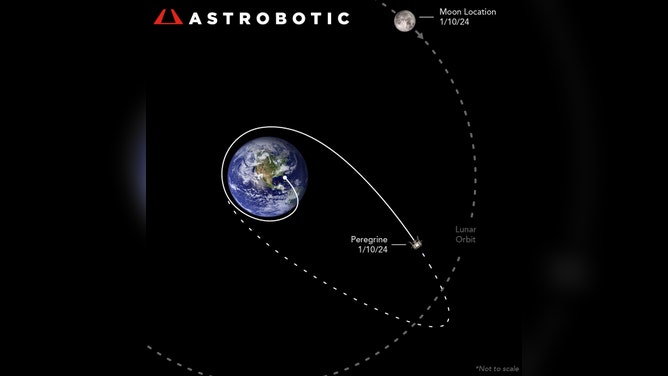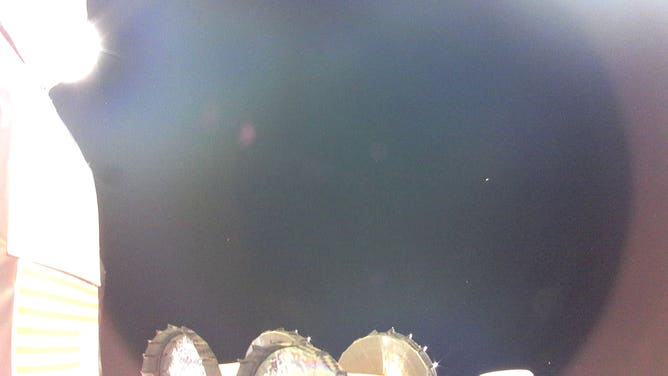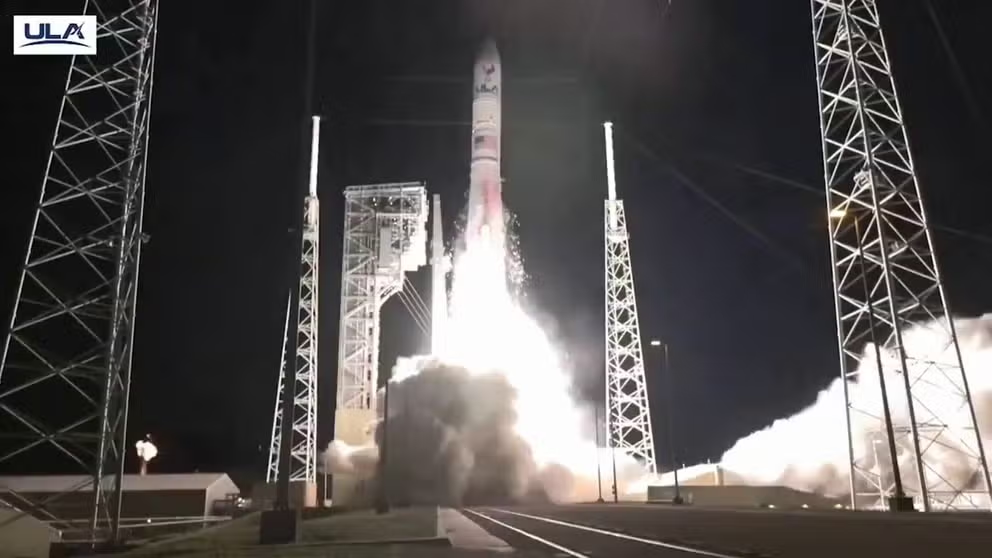Peregrine spacecraft reaches Moon distance but lunar landing won't happen
With propellant leaking, there is no possibility of a Moon landing. Still, Astrobotic's Peregrine Moon lander has continued to maintain power and send back images and data.
Inaugural launch of ULA's Vulcan rocket
ULA's Vulcan rocket launches for the first time carrying the Peregrine Moon lander to space. The liftoff happened from Cape Canaveral, Florida on Jan. 8. (video: ULA)
PITTSBURGH – Even if the fate of Astrobotic's Peregrine Moon lander is sealed without hope of a lunar landing, the spacecraft continues to operate in space, extending its life further than expected.
The robotic Moon mission known as Peregrine Mission One launched Monday morning on a United Launch Alliance Vulcan rocket from Florida, beginning a more than 240,000-mile trip to the lunar surface. The mission by Pittsburgh-based space company Astrobotic was set to become the first commercial Moon landing. However, mission managers realized Peregrine was in trouble early after the spacecraft separated from the Vulcan rocket.
'NO CHANCE OF' MOON LANDING FOR PEREGRINE LANDER AFTER MISSION-CRITICAL SPACEFLIGHT ISSUES
Astrobotic said the working theory is that a faulty valve caused the oxidizer tank to pressurize beyond its limits, causing it to rupture, leading to a failure of the spacecraft propulsion system. The spacecraft team continues investigating how the mission went awry as data downlinks to Earth via NASA's Deep Space Network.
With propellant leaking, there is no possibility of a soft Moon landing as planned, Astrobotic said on Tuesday. Still, the spacecraft has continued to maintain power and send back images.
Peregrine will reach "Moon distance" on Thursday, but Astrobotic said, "The Moon won't be there."

The Peregrine lander orbital trajectory take it to Moon distance and back around Earth. The lander in this image represents where the spacecraft was on Wednesday, January 10, 2024. (Image: Astrobotic)
"We remain on our nominal trajectory for the mission, which includes a phasing loop around Earth," Astrobtic said. "This loop goes out to lunar distance, swings back around the Earth, and then cruises out to meet the Moon."
If the spacecraft had enough fuel, Peregrine would reach the Moon about 15 days after launch.
Peregrine Mission One was the first spaceflight that is part of NASA's Commercial Lunar Payload Services (CLPS) program and carried five NASA science payloads among the 20 total payloads.
HUMAN ASHES, PET HAIR AMONG ITEMS HEADED TO MOON ON MONDAY LAUNCH
The company said the spacecraft has been able to receive data from nine payloads on Peregrine – including all five NASA payloads – and provide power to 10 payloads. The other 10 payloads do not require power during the spaceflight.
"These payloads have now been able to prove operational capability in space, and payload teams are analyzing the impact of this development now," Astrobotic said. "We are proud of the mission team for achieving this incredible feat under such challenging circumstances."
One of the science missions on Peregrine is a shoe-box-sized rover called Iris, which was designed and built by Carnegie Mellon University students and staff. Peregrine sent back the photo below showing the wheels of the tiny rover in space.

The image from the Peregrine Moon lander taken in space shows wheels of the Iris rover by Carnegie Mellon University at the bottom of the image. On the left is the fuel tank with an American flag. (Image: Astrobotic)
Astrobotic continues to update the expected lifespan of Peregrine, which has exceeded original estimates of just 40 hours post-launch. Peregrine has been operating in space for nearly 80 hours as of Thursday morning.




